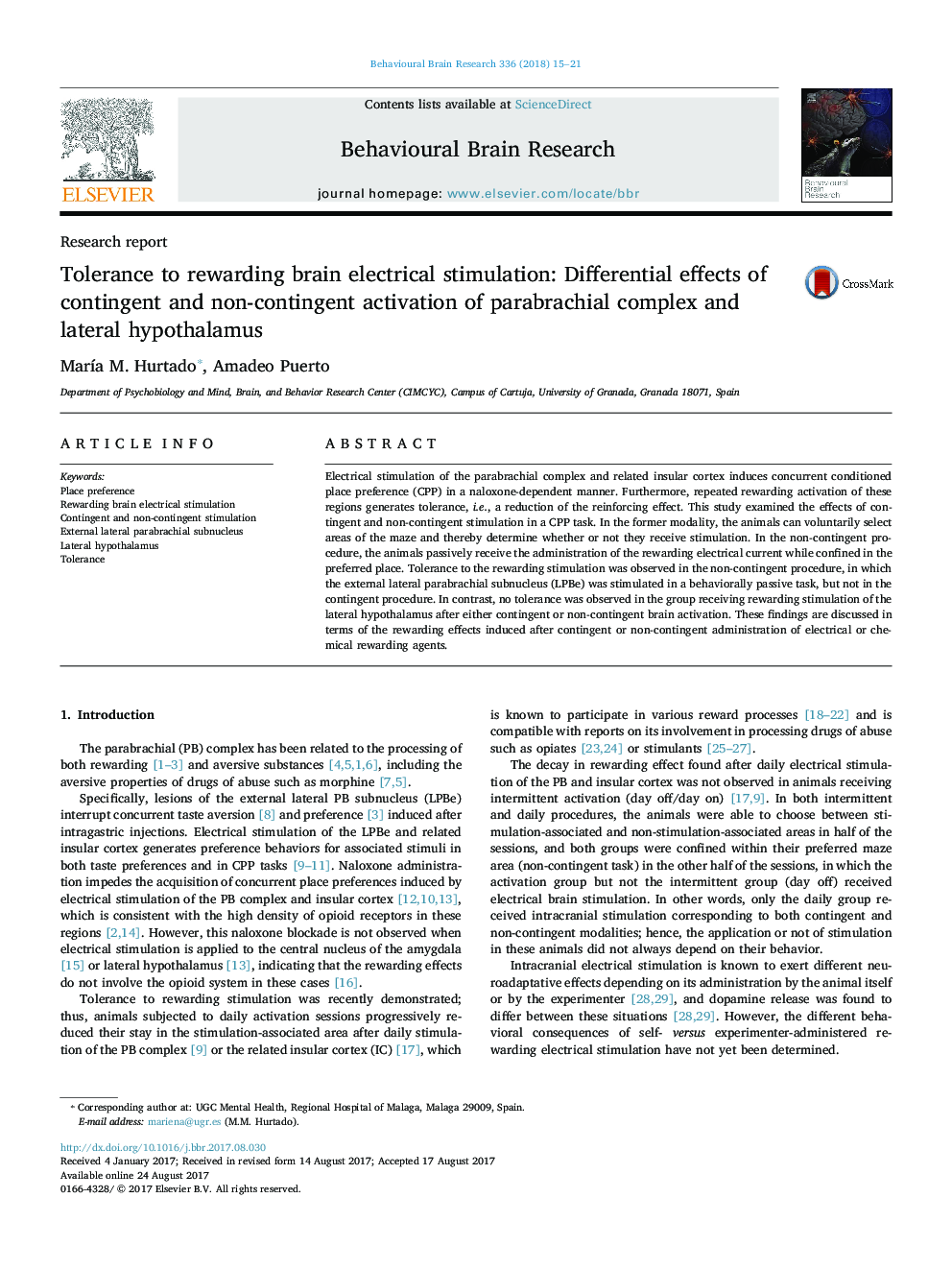| Article ID | Journal | Published Year | Pages | File Type |
|---|---|---|---|---|
| 5735015 | Behavioural Brain Research | 2018 | 7 Pages |
Abstract
Electrical stimulation of the parabrachial complex and related insular cortex induces concurrent conditioned place preference (CPP) in a naloxone-dependent manner. Furthermore, repeated rewarding activation of these regions generates tolerance, i.e., a reduction of the reinforcing effect. This study examined the effects of contingent and non-contingent stimulation in a CPP task. In the former modality, the animals can voluntarily select areas of the maze and thereby determine whether or not they receive stimulation. In the non-contingent procedure, the animals passively receive the administration of the rewarding electrical current while confined in the preferred place. Tolerance to the rewarding stimulation was observed in the non-contingent procedure, in which the external lateral parabrachial subnucleus (LPBe) was stimulated in a behaviorally passive task, but not in the contingent procedure. In contrast, no tolerance was observed in the group receiving rewarding stimulation of the lateral hypothalamus after either contingent or non-contingent brain activation. These findings are discussed in terms of the rewarding effects induced after contingent or non-contingent administration of electrical or chemical rewarding agents.
Related Topics
Life Sciences
Neuroscience
Behavioral Neuroscience
Authors
MarÃa M. Hurtado, Amadeo Puerto,
